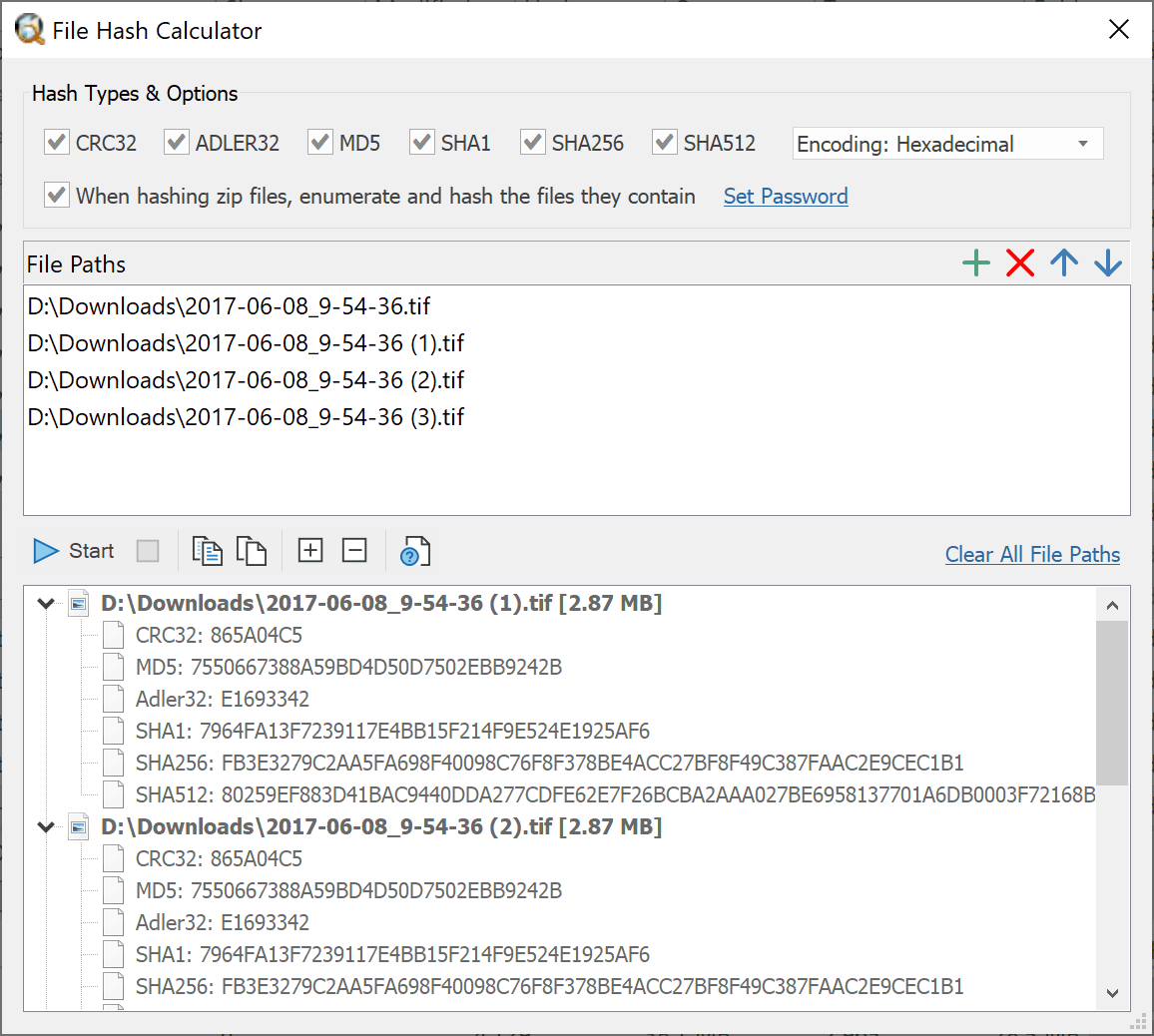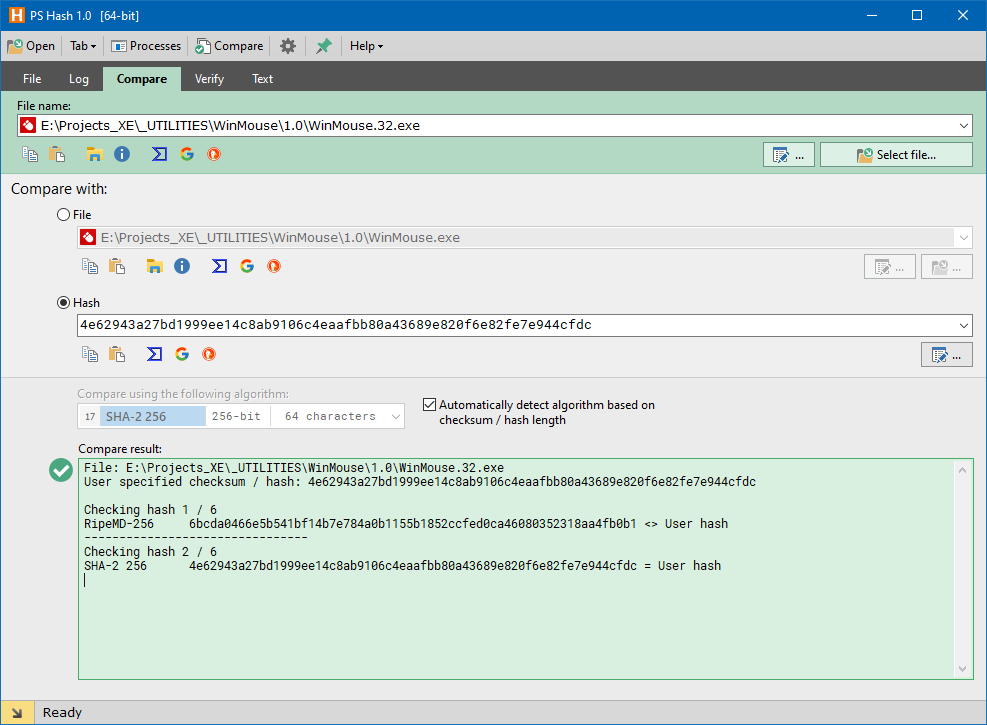

- HASH CALCULATOR COMPARISON HOW TO
- HASH CALCULATOR COMPARISON CODE
- HASH CALCULATOR COMPARISON PASSWORD
HASH CALCULATOR COMPARISON PASSWORD
For example, if before it’s stored in a database every password is salted with the string ‘dog’, it will likely not be found in online databases. To salt a hash, simply append a known value to the string before you hash it. To protect against this, security professionals use a technique known as salting. Anyone (usually a hacker, actually) can go to these sites, search for a hash value and instantly find what the value was before it was hashed: For example, there are websites that publish millions of words and their related hash values. One of the easiest ways is to access a list of words and the hash that each results in. If they match, you’re in! Can I Break a Hash? Can I Keep Someone Else From Breaking it?Ĭan hashes be hacked? Absolutely. On the system’s side, whenever you log in, it takes the password you give it, runs it through its hash formula and compares the result to what’s in its database. the value you type into a logon screen) is actually the word password. He has no way of knowing that your password (i.e. He can see that the hash is, for example, 5f4dcc3b5aa765d61d8327deb882cf99, but he can’t use that to get into the system and look like you. However, if the system stores your password as a hash, then seeing it won’t do a hacker any good. They can then go out to the logon screen for that system, type in that username and password, and get access to anything that you are allowed to do on that system. There’s a problem here, though: any employee who accesses the database, or any hacker who breaks into the system, can see everyone’s username and password. When an online system stores your credentials, it usually stores both your username and password in a database. Notice that it’s the same as the hash value we created earlier! In the words of Bernadette Peters in THE JERK, “This s_t really works!” Hashing and Passwords Hash = hashlib.md5(“Dataspace”.encode(‘utf-8’))
HASH CALCULATOR COMPARISON CODE
Here’s a quick example coded in Python (call me if you’d like to walk through this code – I’d love to chat!): Hashing capability is available in standard libraries in common programming languages. For example, MD5, SHA1, SHA224, SHA256, Snefru… Over time these formulae have become more complex and produce longer hashes which are harder to hack. There are a huge number of widely accepted hashing algorithms available for general use.

HASH CALCULATOR COMPARISON HOW TO
Remember, hashing is different – you can’t get your original data back simply by running a formula on your hash (a bit about how to hack these, though, in a moment). With encrypting you pass some data through an encryption formula and get a result that looks something like a hash, but with the biggest difference being that you can take the encrypted result, run it through a decryption formula and get your original data back. If you need to go in two directions, you need encrypting, rather than hashing. Hashing works in one direction only – for a given piece of data, you’ll always get the same hash BUT you can’t turn a hash back into its original data. For example, the MD5 for dataspace with a small d yields 8e8ff9250223973ebcd4d74cd7df26a7 Hashing is One-Way Ĭhanging even one character will produce an entirely different result. Every time it will return that same value. So, for example, the MD5 formula for the string Dataspace returns the value e2d48e7bc4413d04a4dcb1fe32c877f6. Regardless of whether you feed in the entire text of MOBY DICK or just the letter C, you’ll always get 32 characters back.įinally (and this is important) each time you run that data through the formula, you get the exact same hash out of it.

For example, the MD5 formula always produces 32 character-long hashes. That hash is usually a string of characters and the hashes generated by a formula are always the same length, regardless of how much data you feed into it.

Hashing is simply passing some data through a formula that produces a result, called a hash. Hashing What does it mean to hash data and do I really care? What is Hashing?


 0 kommentar(er)
0 kommentar(er)
